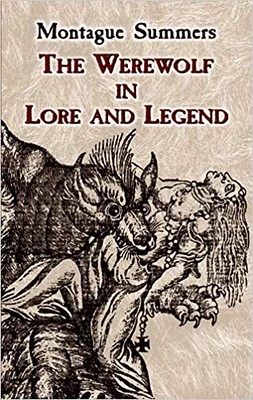Beast of Gevaudan (1764–1767) Werewolf terror in the Gevaudan region of south-central France.
From July 1764 to June 1767, a pair of large and unusually colored man-eating wolves attacked and killed 60 to 100 people or more in Gevaudan, causing a widescale panic. Many feared the killings to be the work of a single wolf; others believed the creature to be a tiger or hyena, or the offspring of a tiger and lioness. Still others believed the Beast (La Bête) to be a werewolf.
A poster printed in 1764 described the unusual Beast:
Reddish brown with dark ridged stripe down the back. Resembles wolf/hyena but big as a donkey. Long gaping jaw, six claws, pointy upright ears and supple furry tail— mobile like a cat’s and can knock you over. Cry: more like horse neighing than wolf howling.
Montague Summers gave this description based on an article in London Magazine in 1765:
For months this animal panic-struck the whole region of Languedoc, and is said to have devoured more than one hundred persons. Not merely solitary wayfarers were attacked by it, but even larger companies traveling in coaches and armed. Its teeth were most formidable. With its immense tail it could deal swinging blows. It vaulted to tremendous heights, and ran with supernatural speed. The stench of the brute was beyond description.
King Louis XV took a personal interest in the situation, for the panic could have political ramifications. The Gevaudan area was actually an independent state (it was not annexed to France until 1791) and was rife with tensions between the Huguenots and Jesuits. Huge bounties were posted for the killing of the Beast. Teams of professional wolf-hunters and dogs fanned into the forests. Several detachments of dragoons joined the hunt as well. At the height of the panic, more than 20,000 men joined the hunt in several parishes. More than 1,000 wolves reportedly were killed.
One of the more appalling means of trying to kill the Beast was an extensive use of poison, advocated by the king’s chief wolf-catcher, M. Denneval. Dogs were fed high doses of poison, and their tainted carcasses were left out as bait for the Beast. Instead, the carcasses attracted and killed domestic dogs, farm animals, and other animals. The poisonings were finally ended when too many working dogs were lost among the peasants.
The Beast eluded all efforts. In one week in June 1765 alone, four people were killed and eaten: a woman, an eight-year-old child, a 15-year-old girl, and another person. Most victims were mutilated and torn to pieces; some remains were too small for burial. One girl was recognized only by her eyes.
The peasants became convinced that the Beast was a werewolf sorcerer, and would never be caught. One farmer claimed that he had seen it and had heard it speak.
The terror finally came to an end when the male wolf was killed on September 21, 1766, and the female of the pair was killed in June 1767. The wolves may have been dog-wolf crosses. They were exceptionally large for wolves, and they had unusual colorations and markings. The 2001 French film BROTHERHOOD OF THE WOLF is loosely based on the Beast of Gevaudan.
SEE ALSO:
FURTHER READING:
- Sidky, H. Witchcraft, Lycanthropy, Drugs and Disease: An Anthropological Study of the European Witch-Hunts. New York: Peter Lang, 1997.
- Summers, Montague. The Werewolf. New York: Bell Publishing, 1966.
SOURCE:
Encyclopedia of Vampires, Werewolves, and Other Monsters – Written by Rosemary Ellen Guiley -a leading expert on the paranormal -Copyright © 2005 by Visionary Living, Inc.





